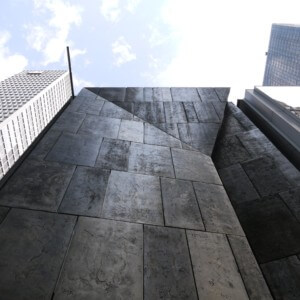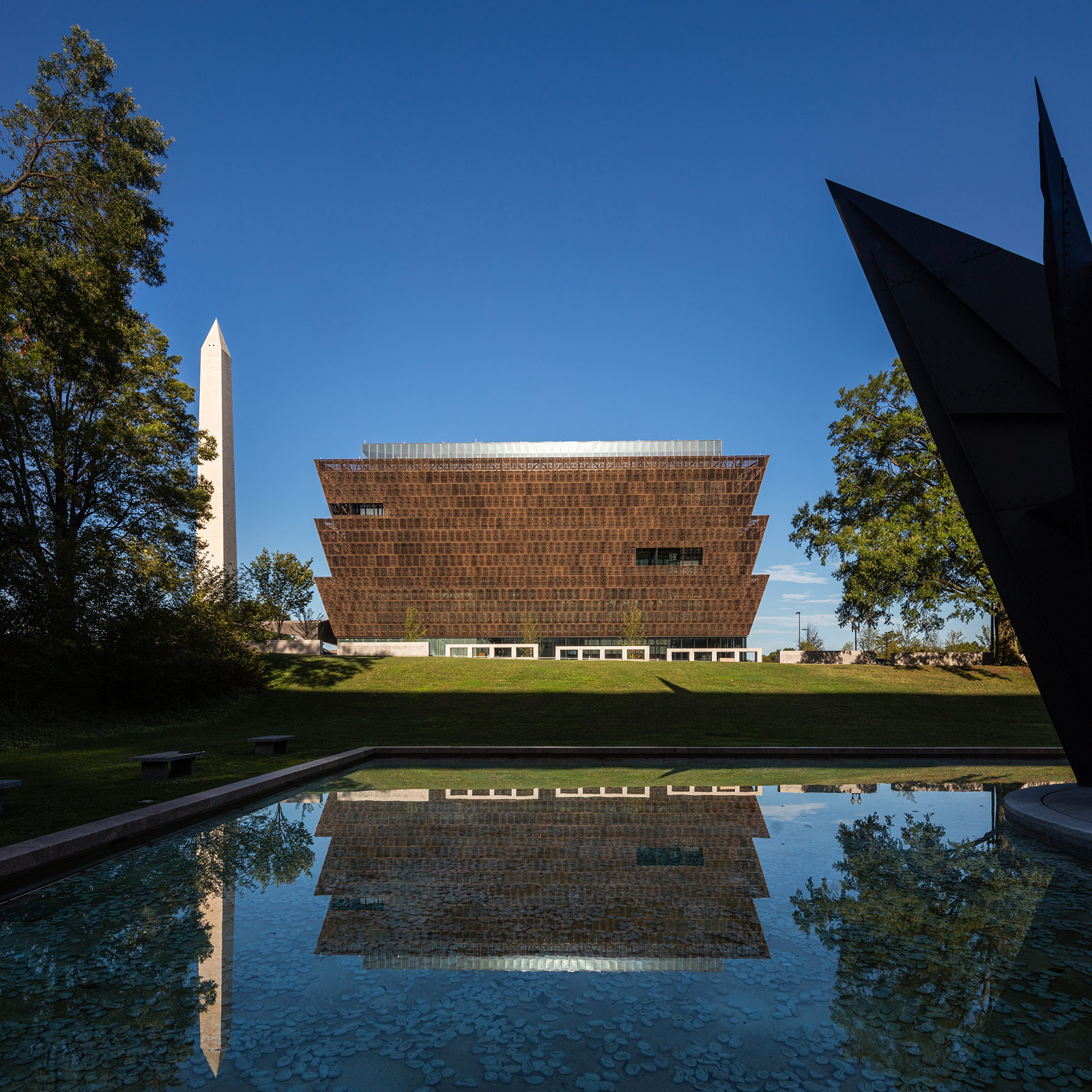For those architects with an interest in theater, Wednesday was the West Coast premiere of Oren Safdie’s newest play, False Solution, at the Santa Monica Playhouse (tickets may be purchased here). Safdie earned an M.Arch at Columbia University and is the son of architect Moshe Safdie. He has now written three plays inspired by contemporary architecture, including The Bilbao Effect and Private Jokes, Public Spaces. False Solution, which also played in New York last summer, follows Anton Seligman, a successful architect whose latest commission, a new Holocaust museum in Poland, is aggressively challenged by one of his new interns, Linda Johansson. She also confronts his beliefs in himself, his career, his profession, and much more. On May 1, AN will host a panel discussion at the Santa Monica Playhouse moderated by West Coast Editor Sam Lubell. Panelists include Safdie, the show’s stars Daniel J. Travanti and Amanda Saunders, and architects Craig Hodgetts and Hagy Belzberg. False Solution runs through May 11. Last week Lubell sat down with Safdie to discuss the play, its challenges, and the arc of his career. Read the interview below.
Sam Lubell: I was talking to one of the actors about how False Solution really has an impact on many levels and holds together well. One thing I noticed was that there are a lot of specifics that come up, and I’m wondering, did you have any real life inspirations for any of these characters or situations? Oren Safdie: It’s an amalgamation in some ways, but obviously there are references that are made that I think more people in the architecture community will get. Not necessary the characters as much as the building referenced in the play. It derives from two different philosophies in two different Holocaust museums that I used as my model—one based on the Jewish Museum by Daniel Libeskind in Berlin and one on my father’s Holocaust museum in Jerusalem. I always noted that they took completely opposite approaches. One being the extreme—trying to express as much as one can in a building about the Holocaust—versus the opposite approach that pretty much eliminates any architectural expression and tries to void the building and allow the exhibit to stand by itself. I try to let these two philosophies bleed into the characters and then create tension between them. It’s not just a subtle allusion. Each one of those is clearly represented. Yes, definitely. You can’t forge the reality. But in terms of the characters, they are parts of different characters. This architect is not based on Libeskind and the young female student is not based on my father. They are just the characters and you just infuse those philosophies into their characters. In many ways it’s interesting that the struggles to design a museum reflect the struggles in these characters. Being in the architecture world I don’t often get to see a side of architecture that reflects inner turmoil or inner struggles, so I think that is a very powerful technique. I think where I started from, more than focusing on a Holocaust museum, was focusing on an architect who is at the pinnacle of his career and who is adored by the public and by the press. Yet something within him has doubts—debating if he’s a fraud or not. What would it take for somebody to prick that balloon and let all the air come out? A young, attractive, intelligent first year architecture student certainly is capable of that. Which brings up another interesting aspect of your work: You’re not afraid to pull punches. You’re willing to criticize the profession of architecture. Well I think I’m in a position to do that because I won’t lose any jobs if I do. I think having a foot in architecture and being in architecture school gave me an in-depth knowledge. I never really practiced, but I can sort of do things and not really worry about that. Not to say that people don’t get upset, but for the most part I think people have responded well. But sometimes you read some architecture critics and they can be equal to those theater critics that bring out the knives. Certainly there was a very direct criticism of Libeskind and the sense of making people queasy with architecture. I don’t know that’s the way you feel about it but it was a very specific critique. I don’t know if it was a critique? I put it out there and maybe you see it like that and other people may see that. Hopefully I didn’t make a judgment on it. I think you mentioned once that Frank Gehry was mad at you for a little bit. Well I don’t receive personal phone calls from him, but I heard through the grapevine that he did not like the fact that I used the Bilbao Effect for the title of one of my plays. It was a fictitious look at the Brooklyn shipyard project, but was set in Staten Island. Really it was high satire. It was a court case involving a member of the public who was bringing a lawsuit against the architect because he blamed his wife’s suicide on the architect. It was always a far-fetched scenario. After architecture school, what made you decide to veer off into playwriting? It was pretty instantaneous. In my last semester in architecture school I took a playwriting course, because Columbia encouraged us to take a course outside of Architecture and Art History. I wrote a 10-minute scene based on my experience of juries in architecture school, which became my first architecture play, Private Jokes, Public Places. I guess while other people were really focusing on buildings I was just amazed at the drama that took place during student pin-ups. I didn’t turn back after that. You’re not afraid to get technical. Being in this arena and not being an architect, I appreciate that you obviously know the talk. But it’s not to the point that laypeople can’t understand it. Right. If the story doesn’t have an inner tension—in False Solution it’s about this older man and younger woman—then I think you lose them as well. I remember going to see Tom Stoppard, a British playwright, who wrote the Invention of Love. It was all references to something I did not understand. In fact, I probably only understood 50 percent of the play. Yet that play has stayed with me, because the moments in between all the dialogue that I could understand were very heart wrenching and memorable. So I see the technical stuff as background music, and every so often the story is punching through and you’re following that. Obviously the emotions and human drama are the things that hit you the hardest. Hopefully. You do have to follow and you do have to work for it. Its not the kind of play that you’re going to come in and sit back and relax. You have to stay alert and follow these things. It’s a workout for the brain. I have to mention the fact that your father is a very famous architect. Is that something that you struggle with? A pressure to be compared to your father? Well it’s a double-edged sword really, because I sometimes I feel that it’s given me a foot in. Some people might say. “Oh, well I’ll go see this because he’s the son of… maybe there would be something interesting.” It’s also worked against me in some ways in which people dismiss me and say, “Well the only reason he’s gotten there is because…” I think getting away from architecture or being a practitioner was probably a healthy thing for me to do. Theater is a world quite far away from architecture, and yet these plays are a way to participate in the debate.









